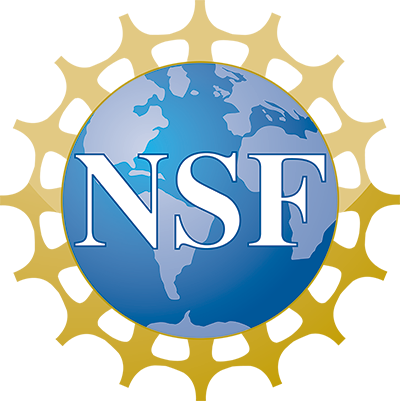Schematic overview of our cryogenic ion spectroscopy setup. Click on image to see an animation.
We use electrospray ionization to bring ions from solutions into the gas phase. The ions enter the vacuum apparatus of the instrument through a desolvation capillary. They are then transferred through a series of octopole ion guides into a high vacuum chamber, where they are injected into a temperature controlled (T = 10 - 300 K) Paul trap. After entering the trap, the ions cool down in collisions with cold buffer gas, before being ejected into the acceleration region of a time-of-flight mass spectrometer. Here, the ions are mass-separated and then mass-selected using a pulsed mass gate. After mass selection, the ions are irradiated with light from a nanosecond-pulsed, tunable optical parametric converter system operating either in the near UV and visible range, or in the infrared. Fragment ions generated by photon absorption and subsequent photodissociation are analyzed in a second mass spectrometry step, using a reflectron. The fragment ion intensity is monitored as a function of the photon energy, yielding a photodissociation spectrum.
We gratefully acknowledge funding from the U.S. National Science Foundation for this research. 


 The Physics Frontiers Centers (PFC) program supports university-based centers and institutes where the collective efforts of a larger group of individuals can enable transformational advances in the most promising research areas. The program is designed to foster major breakthroughs at the intellectual frontiers of physics by providing needed resources such as combinations of talents, skills, disciplines, and/or specialized infrastructure, not usually available to individual investigators or small groups, in an environment in which the collective efforts of the larger group can be shown to be seminal to promoting significant progress in the science and the education of students. PFCs also include creative, substantive activities aimed at enhancing education, broadening participation of traditionally underrepresented groups, and outreach to the scientific community and general public.
The Physics Frontiers Centers (PFC) program supports university-based centers and institutes where the collective efforts of a larger group of individuals can enable transformational advances in the most promising research areas. The program is designed to foster major breakthroughs at the intellectual frontiers of physics by providing needed resources such as combinations of talents, skills, disciplines, and/or specialized infrastructure, not usually available to individual investigators or small groups, in an environment in which the collective efforts of the larger group can be shown to be seminal to promoting significant progress in the science and the education of students. PFCs also include creative, substantive activities aimed at enhancing education, broadening participation of traditionally underrepresented groups, and outreach to the scientific community and general public.